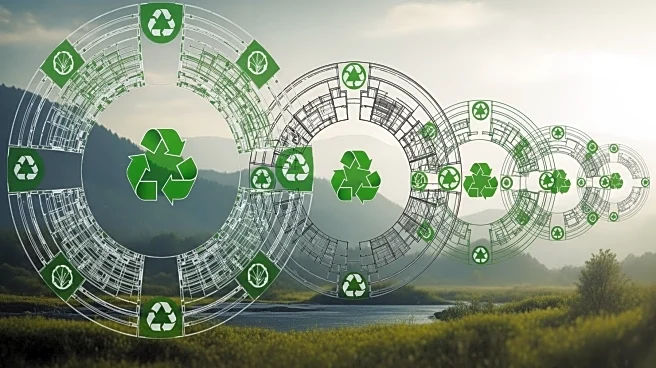What's Happening?
A recent meta-analysis has raised concerns about the presence of microplastics in human bones. Researchers reviewed existing studies and found alarming evidence that microplastics, which are pervasive in the environment, have been detected in human bone tissue. These particles are known to affect cell viability, modify gene expression, and trigger inflammatory responses. The study highlights a gap in understanding the influence of microplastics on osteometabolic diseases, which are conditions affecting bone metabolism. The authors call for further investigation into the causal links between microplastics and bone health issues.
Why It's Important?
The findings underscore the potential health risks posed by microplastics, which are already linked to various health concerns. The presence of microplastics in bone tissue could compromise bone marrow function, affecting the production of blood cells essential for carrying oxygen and fighting infections. This discovery adds to the growing body of evidence that microplastics pose a significant threat to human and animal health. With over 500 million tons of plastic produced annually, and a significant portion ending up as environmental litter, the implications for public health and environmental policy are profound.
What's Next?
Addressing the microplastics issue requires a multifaceted approach. While recycling efforts are crucial, they are insufficient to tackle the scale of plastic pollution. Reducing the production of new plastics is essential. On an individual level, consumers can contribute by opting for plastic-free products and supporting companies that use sustainable packaging. These actions not only reduce personal plastic waste but also signal a demand for change in manufacturing practices. Continued research into the health impacts of microplastics will be vital in shaping future policies and consumer behaviors.
Beyond the Headlines
The ethical and environmental dimensions of plastic pollution are significant. The persistence of plastics in the environment raises questions about sustainability and the responsibility of industries to mitigate their environmental impact. The potential long-term health effects of microplastics on future generations highlight the need for urgent action. This issue also reflects broader challenges in balancing industrial growth with environmental stewardship, necessitating a reevaluation of current production and consumption patterns.










